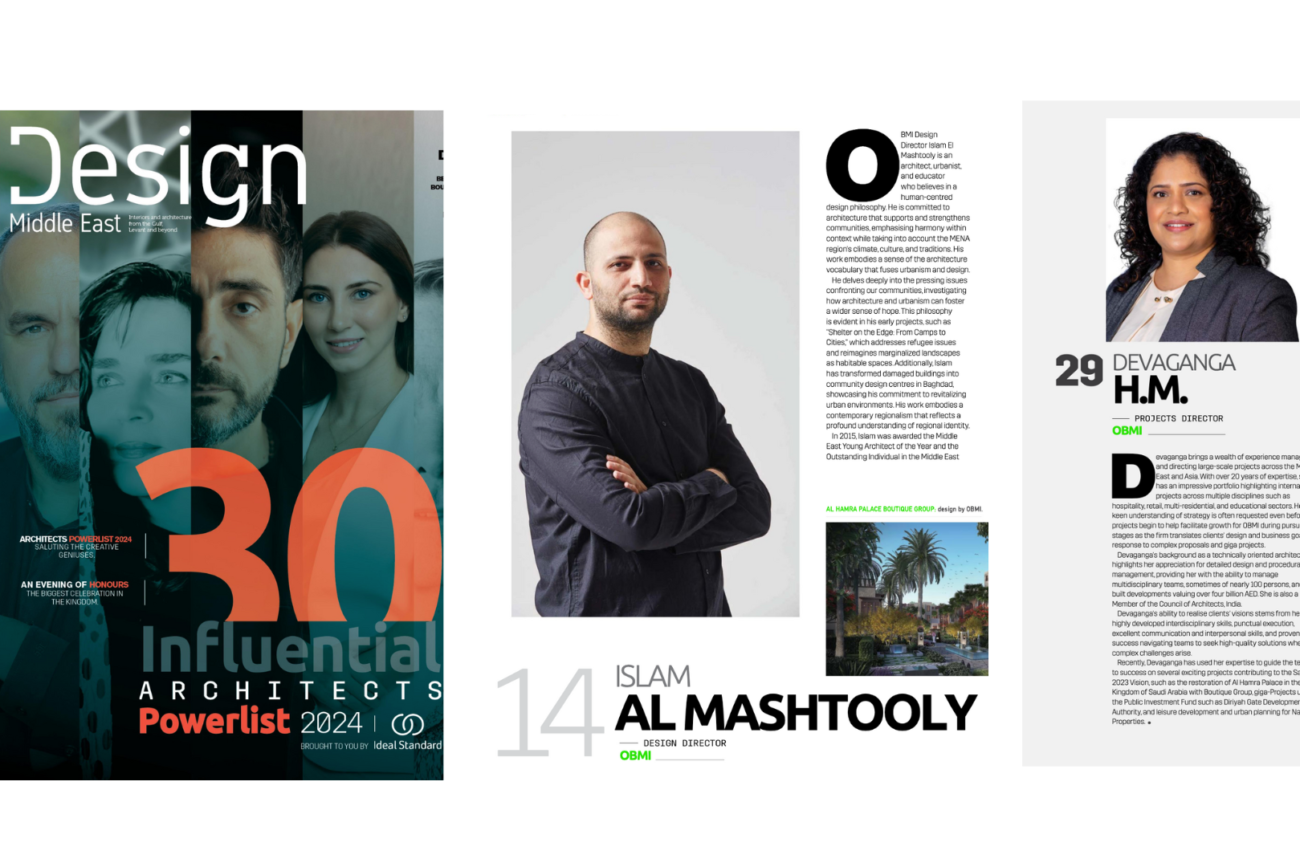The housing boom of the mid-2000s temporarily rescued the hospitality sector after the events of September 11 nearly decimated the travel industry. Adding a residential component to hotel projects provided developers leverage for financing, and inflated home values gave consumers excess cash for travel. Now the U.S. hotel sector is rebounding from the Great Recession. This time recovery is on more solid footing provided by core real estate principles and conservative lending practices, creating the stability the sector needs to respond to changing customer values.
A lack of new hotel development is causing values to escalate, notes attorney Jim Butler, a partner and chair of the Global Hospitality Group at JMBM, an international consulting firm based in Los Angeles. Hotel properties appreciated on average 10 to 15 percent in 2010, after values fell 50 percent in 2009, and are on target to surpass the 2010 increases this year.
“In isolated transactions in New York and San Francisco, some properties are going for peak prices prior to 2009,” Butler says. He notes that Steve Rushmore, founder of HVS, a New York–based consulting firm specializing in appraisals, predicts that values will appreciate on average 20 percent annually for the next five years.
Strong hotel performance is helping boost values, notes Jeffrey Rogers, president and chief operating officer for Integra Realty Resources, a New York City–based consulting and valuation firm. Hotel revenue per available room (RevPAR), the industry’s performance standard, is rising after two years of losing ground. RevPAR increased 5.5 percent in 2010 and was up 8.5 percent through this past June, according to the latest report by Smith Travel Research, after suffering a 2 percent loss in 2008 and 16.6 percent loss in 2009.
Despite improving fundamentals, U.S. banks still require 50 to 60 percent equity to fund hotel development, even if deals make perfect sense, notes Michael Achenbaum, president and chief executive officer for Gansevoort Hotels. Therefore, more trading than development is taking place, he says. “Stalled jobs are getting finished, but you won’t see much new construction anytime soon,” he notes.
Stalled hotel projects will get finished if buyers can acquire them at the right price, says attorney Clifford Risman, a partner at the Houston-based Gardere hospitality industry team, but projects that relied on residential presales to work are dead unless the hotel can stand on its own. A good example is the Ritz-Carlton in Rancho Mirage, California, which had been stalled since 2008. Danske Bank, which had acquired the note when Lehman Brothers went bankrupt, sold the note to an investor consortium for pennies on the dollar. “When things get to the second or third owner, it has a good chance of getting restarted, but even then it’s difficult because the owner has to come up with 50 to 60 percent equity,” Risman says.
With hotel values still below their peak and performance improving, U.S. urban hospitality markets are also attracting foreign capital. Rogers says international institutions are coming in with a longer investment horizon than is available domestically, but new development is still difficult because these institutions are seeking a loan-to-value (LTV) ratio of 80 percent. Before the economic meltdown, LTV was at 95 percent.
“Chinese money coming into the U.S. market—that’s really the [main] game in the hotel sector outside of New York and D.C. [District of Columbia],” suggests Butler. Chinese investments are primarily on the West Coast, he says. Chinese money helped finance the $350 million W Hollywood Hotel and Residences, managed by Starwood, he notes. In the past year, Hong Kong–based Shenzhen New World Group acquired two bargain-priced hotels in Los Angeles: the 469-room Marriott in downtown was purchased out of foreclosure for $60 million from Namco Capital Group, which had paid about $115 million for the property in 2007; and the 451-room Sheraton Universal was bought earlier this year for an estimated $90 million from Lowe Enterprises, which paid $122 million for the property in 2007 and spent another $25 million on upgrades.
“There’s a ton of money on the sidelines waiting for the right deals to make things work,” Risman says. “Funds are looking for turnaround plays, not new development.” But he says developers can get new projects done in the right locations under the right circumstances. “It’s about location, a good sponsor, experienced developer, reputation of the flag, and development theme,” he says. “No one will do a deal without a good balance of those.”
Downtown Brooklyn is a prime example. Two hotels opened there in the past year—the 320-room Sheraton and the 240-room Aloft Hotel, a chic urban brand by Starwood designed to compete with boutique properties. Another new hotel is scheduled to open in October: the 128-room Hotel 718, which takes its name from the district’s area code, is under development by Texas-based Benchmark Hospitality International’s new V3 Hotels brand.
New hotels were opened during the economic downturn in U.S. gateway cities and other urban destinations with heavy tourist or business traffic, and more are coming.
Kimpton Hotels has opened eight hotels in seven U.S. cities over the past two years, including the 194-room Hotel Palomar Philadelphia, which repositioned a landmark building in Philadelphia’s historic Rittenhouse Square and received a Gold rating under the Leadership in Energy and Environmental Design (LEED) program. The company also is repositioning a historic office building across from Independence Hall to create the 271-room Hotel Monaco Philadelphia, also to be rated Gold under the LEED program.
First Hospitality Group, a hotel development and management company based in Chicago, recently completed an adaptive use project in downtown Des Moines, Iowa, that converted a 1930s office building into the Hyatt Place Des Moines/Downtown. The company is also converting the upper floors of Chicago’s Bank of America Theatre, formerly known as the Sam Shubert Theatre and the La Salle Bank Theatre, to serve as a hotel, and plans to convert an early 1900s office building in Minneapolis for hotel use.
These projects are complicated, but “make sense for developers who are anxious to begin expanding after a two-year void,” says First Hospitality president Bob Habeeb. Old buildings require due diligence to ensure structural integrity and to eliminate the chance of unpleasant surprises, he points out, but they also provide advantages, including prime locations, irreplaceable architectural features, and eligibility for tax credits and other incentives that help projects pencil out.
Carlson Hotels, a global hospitality company based in Minneapolis, plans to double its hotel portfolio by 2015 to more than 1,500 properties worldwide. The company opened 66 properties in 2010 and more than 20 this year, and has nearly 100 projects in the pipeline.
The company is currently rolling out a new ultraluxury brand, Radisson Blu, and is seeking opportunities for conversions and new construction in key U.S. cities and destinations, says Robert Kleinschmidt, Carlson Hotels executive vice president and chief development officer. Radisson Blu will provide a halo for the Radisson brand globally that will broaden its upper-upscale tier worldwide and help solidify the Radisson luxury brands in U.S. markets, Kleinschmidt says.
With financing from a combination of tax-exempt funds, traditional bank loans, and institutional capital, the 334-room Radisson Blu Aqua Hotel in Chicago is to open this fall. Also, a 500-room, $137.5 million Radisson Blu project is under way at Mall of America in Bloomington, Minnesota.
Hilton Hotels & Resorts is expanding its extended-stay portfolio, with seven hotels under construction and 99 projects in the pipeline. “The Homewood brand proved recession-proof,” says Bill Duncan, global head of brand management for Homewood Suites. The upscale Homewood Suites brand is on target this year for record growth of 7 percent, he says. Noting that business travelers, with an average stay of 12 days, constitute 50 percent of Homewood Suites customers, he suggests that the extended-stay concept has resonated with business travelers because the comfortable, homelike environment improves productivity.
Hilton is in the process of rolling out a midscale, limited-service, extended-stay brand, Home2 Suites, to compete with Marriott’s TownePlace Suites and Intercontinental Hotels & Resorts’ Candlewood Suites. Demand for valued-priced properties has increased during the recession and continues to grow, Duncan says. Home2 is priced at $90 per night, compared with $115 to $120 for Homewood, which provides breakfast and dinner four nights a week.
Extended-stay projects are easier to finance than other industry sectors, Duncan says, because they cost under $10 million to build and have demonstrated consistent profits and high demand, all of which makes them attractive to real estate investment trusts and private investors.
Increased demand for value-priced hotel rooms also has given rise to a new concept of combining multiple hotel flags in one building. CNY Builders, a New York City developer, created on West 39th Street in Manhattan the first project in the nation purposely built as a multiflag property. Funded with a mix of traditional financing and private equity, the 584-room project includes a Candlewood Suites, a Holiday Inn Express, and a Hampton Inn by Hilton.
“In New York City, there is need and demand for this,” says Ken Colao, president of CNY Builders. This concept provides comfortable lodging with fewer amenities for people willing to get less in order to pay less, he says. “People come to New York City to experience the culture and restaurants, and not everyone can afford a four- or five-star hotel,” he says. The concept provides operating efficiencies and a way to diversify assets, he notes, offering the flexibility to sell off pieces, which improves performance and values.
Competition for properties in gateway cities is driving values up and capitalization rates down, says attorney Rick Ross, chair of the hotels and leisure practice at SNR Denton, a global law firm based in New York City. “Consequently, investors are moving to secondary markets,” he says. “Buyers are coming in with capital to renovate, so the market is very active with refurbishments across regions.”
Hotel owners are updating older properties not only to compete with newer hotel supply but also to accommodate changes in management and flags. Teresa Goebel, a partner in the San Francisco office of the Goodwin Procter law firm, notes, for instance, that the iconic Helmsley Hotel in midtown Manhattan was recently bought by Host Hotels and will be renovated and managed by Starwood under the Westin Hotel flag; likewise, the privately owned La Jolla Hotel in San Diego is being repositioned as a Kimpton Hotel.
Hotel makeovers need to reflect the values of today’s traveler, who tends to be Earth friendly, health oriented, and focused on the culture, art, and experiences offered by the hotel’s community, says architect Joe Pettipas, a principal and senior vice president in the Calgary office of HOK’s Canadian practice.
Boutique hotels, which are known for unique, flexible designs and socially active, aesthetically interesting, eco-friendly, health-oriented environments, appear to be the new guidepost for hotel design and programming. “The brands are taking cues from the boutiques, embracing the best of what they offer to create customer satisfaction,” Pettipas says.
The first in the industry to understand the relationship among the three elements in a triple bottom line—planet, people, and profit—boutique operators began adopting green practices in order to gain a competitive edge and in the process set off the industry’s movement toward sustainability.
Sustainable boutiques set the bar high for hotel development over the past year with the opening of the first two LEED Platinum–rated hotels in the United States—Benchmark’s 62-room Bardessono Hotel and Spa in California’s Napa Valley, and the 142-room Proximity Hotel in Greensboro, North Carolina, by local operator Quaintance-Weaver Restaurants and Hotels of Greensboro. In addition, a handful of LEED Gold projects opened, including Crosby Street Hotel in New York City’s SoHo district; Kimpton’s Hotel Palomar Philadelphia; City Flats in Holland, Michigan; Fairmont Pittsburgh in Pittsburgh; and Hotel Indigo-Athens on the University of Georgia campus.
The major brands have been slower to embrace sustainability, notes Craig Davenport, a principal and specialist in sustainable design at Seattle-based MulvannyG2 Architecture. “It wasn’t until the general public began to get more educated and demand these features that they stepped onboard.”
“Everyone has to do it now,” notes Doug Kulig, chief executive officer of OBMI, an architecture firm based in Coral Gables, Florida. “But it’s what level to go to and where to draw the line that’s a little gray.” Rogers contends the answer is simple: “When it comes to green, . . . upgrades without a three-year return on investment will likely be left on the drawing board.”
However, the larger brands are now monitoring the market, pressing to understand the next generation of corporate business traveler, which is accelerating its interest in developing green properties, Davenport says. He notes that his Olive 8 project, a new LEED Silver–rated hotel in Seattle operated by Hyatt, attracts a different demographic than the company’s nearby Grand Hyatt. “Today, we rarely find a developer that doesn’t want, at minimum, a Silver rating,” he says.
“More often than not, hotel owners and operators ask for green elements that reduce operational costs, such as efficient lighting and HVAC [heating, ventilation, and air conditioning], low-flow water fixtures, and solar equipment,” says architect Tom Ito, hospitality practice leader at architecture and design firm Gensler, who designed two of the new LEED Gold–rated hotels, Hotel Palomar Philadelphia and Fairmont Pittsburgh.
He acknowledges the reluctance of companies to conduct green upgrades in today’s economy, but says, “Not doing it is a missed opportunity as sustainability and economy are not mutually exclusive.” Ito cites a recent survey of sustainable hotel upgrades that showed lower lighting power density reduced energy costs an average of 37 percent and variable-primary-low HVAC systems provided average savings of 26 percent.
But cost savings and return on investment are not the only reason to invest in green. “We were the first LEED Gold–certified hotel in Philadelphia and found that many guests sought us out for offering green accommodations,” says Nick Gregory general manager of Hotel Palomar Philadelphia. David Colella, vice president and managing director of Colonnade Hotel in Boston, is just as pleased with the guest satisfaction and goodwill generated by his hotel’s recent $25 million sustainable “reinvention” as he is with the 25 percent in energy savings it provides. “There are additional expenses we absorb because they are the right thing to do and fit the spirit of our hotel’s mission,” he says. “Certainly, our guests are aware of the environment . . . and are choosing to do business with companies that are socially conscious.”
The boutiques also were the first to respond to the sea change in traveler values and priorities, engaging guests in localism to indulge their desire for authentic experiences. “Boutique properties are a mecca for people seeking a more local and authentic getaway experience,” points out Gregory. Boutiques hotels may be more nimble than corporate hotels, he suggests, enabling them to make changes quickly and offer guests the most current activity options.
“People today want to be moved and transformed by the experiences,” explains Kulig. “Travelers don’t return to be in a room. They come back because of the reprogramming, not for the ‘Kodak moments.’” Hotel operators are now hiring experts to provide programming and are looking to designers to set the stage for them to animate, he says. “Programming is very important,” Pettipas agrees. “When we see this change in five- and six-star hotels, you know how important it is.”
Changing guest attitudes and expectations are affecting the hospitality industry at all levels, Rogers says. “It’s not enough to just be urban,” he says. Makeovers must involve more than just converting guest rooms; they need to encompass the addition of hip, branded restaurants with healthy menu items; a lively night scene such as a popular rooftop bar or nightclub with live entertainment; and health amenities with newly constructed workout facilities.
Today’s guests consider overzealous, conspicuous displays of consumption distasteful, Kulig suggests, so the addition of gilding-the-lily features at the high end is not required. Rather than tangible opulence, ultra-luxury hotels are focusing on premium service and amenities. “We’re seeing saltwater pools that are better for skin and hypoallergenic rooms,” he notes.
Technology is facilitating shifts in priorities and design changes. Wireless access has inspired creation of public spaces where guests can take their laptops and connect and socialize, such as a Starbucks hub in the lobby area. Similar to the boutiques, brand hotels are installing wireless connections in rooms and replacing built-in furniture with furnishings on wheels that guests can move around to meet their needs, notes Pettipas. The flat-screen TV also has permitted removal of bulky TV armoires, allowing for smaller rooms and increasing valuations, says Kulig.
Brands are moving away from duplication, such as providing the same bedspread in every room, to find ways to create consistency and define brand according to quality and service, such as higher-quality linens and lifestyle amenities. Many upscale hotels now accept pets, such as the Luxe Sunset Boulevard hotel in Los Angeles’s affluent Bel Air community, which offers dog amenities, including a “doggie and me” spa package that provides pet treatments alongside those for owners.
Some luxury resort hotels are creating detached bungalows and villas to address the needs of guests who plan long stays. Jon Krueger, studio director at Irvine, California–based Robert Hidey Architects, designed bungalows at Pelican Hill, an ultra luxury beachfront resort in Newport Beach, California. He points out that these units offer a homelike environment and are ideal for executives on extensive assignments away from home or people traveling with families.
The next leap in service, however, will focus on the integration of technology to provide access to social media to attract the younger generation, as well as improve convenience and customer satisfaction. Rogers predicts smartphones will allow guests to bypass the front desk, with apps to book rooms, check in, open guest room doors, and check out. Bob LaCour, practice director at LaCour-Chodos Interior Design, also expects iPads and other high-tech tablets to evolve with apps that enable guests to control their room environments and equipment with the touch of the screen.
The industry recognizes cultural shifts that are driving the travel sector, and over and above technological breakthroughs and gadgetry are a focus on comfort and lifestyle, LaCour concludes. “There will always be a never-ending appetite for guest room comfort that tracks the traveler’s need for convenience and amenities enjoyed in one’s own home,” he says. “We see this trend continuing and evolving, integrating lifestyle into a more balanced means of traveling and doing business.”






